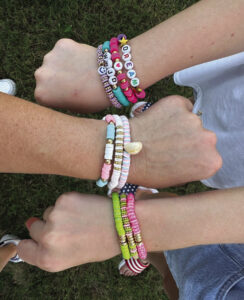Happy hummers: feeding hummingbirds in Alabama
By Katie Nichols
AUBURN UNIVERSITY—It’s summertime and the hummingbirds are here! While hummingbirds are a beautiful and exciting part of Alabama summers, feeding etiquette is still a mystery to many homeowners. However, it is a vitally important part of caring for the hummingbirds in and around the backyard.
White Granulated Sugar
Alabama Cooperative Extension System Forestry and Wildlife Specialist, Wesley Anderson, said it is important to use white granulated sugar when making sugar water.
“Only use white granulated sugar to make sugar water,” Anderson said. “Honey is not easily digestible for hummingbirds, and they will die from lack of nutrition. It could also encourage fungal growth that could harm the birds.”
He said powdered sugar, although white, contains cornstarch to prevent caking and clumping. The additive isn’t good for the birds and can encourage fermentation of the sugar water, so it should be avoided.
“White sugar has been purified to remove all of the molasses, whereas brown sugar has not,” Anderson said. “Molasses contains iron. Even though the amounts of iron in brown sugar and other foods are not harmful—and may even be helpful—to people, hummingbirds would consume enough iron from a brown sugar solution that it could be harmful.”
Red Dye
Anderson said it is best to avoid red dye altogether.
“The advice to remove red dye from solutions came out when Red Dye No. 2 was in use in the 1970s. It was a known carcinogen,” he said. “At that time there was concern it was having detrimental effects on hummingbirds, but no scientific studies were conducted. Red Dye No. 2 has since been pulled from the market.”
Today, many gardeners and homeowners use Red Dye No. 40 in many foods, drugs, tattoo ink and cosmetics. Anderson said while it is labeled safe by the United States Food and Drug Administration (FDA) for human use and consumption, it is important to consider the size of a hummingbird.
“Common hummingbird species, like the ruby-throated, only weigh about three grams—or the combined weight of three paper clips,” he said. “They are incredibly tiny in comparison to humans, so the amount of dye they would consume would far exceed any levels humans would consume.”
Since there isn’t a clear picture of the negative side effects that could cause, it is best to avoid the dye. Anderson recommends using colorful feeders and planting red flowers near the feeders to increase the number of hummingbirds that visit the feeder.
Rescuing Hummingbirds
Many individuals encounter hummingbirds seemingly tangled in spiderwebs. Anderson said hummingbirds will actually use spider silk while constructing their nests. Larger spiders may even feed on hummingbirds.
“If you come across a hummingbird stuck in a spider web and it’s still alive, you can remove it,” he said. “Remove all of the spider silk and allow it to rest. The rescuer may also offer sugar water—white granulated only—in a small cap or lid.”
If the bird appears injured or doesn’t fly away, Wesley suggests finding a licensed wildlife rehabber. It is against federal law to rehabilitate an injured hummingbird without a license.
Anderson cautions individuals to be mindful of the spider that wove the web. He said in Alabama, black and brown widows are the only medically significant species in Alabama that may entangle a hummingbird. For that reason, always exercise caution when removing a bird.
More Information
For more information about hummingbirds, read the Extension publication Hummingbirds in Alabama available at www.aces.edu.
















